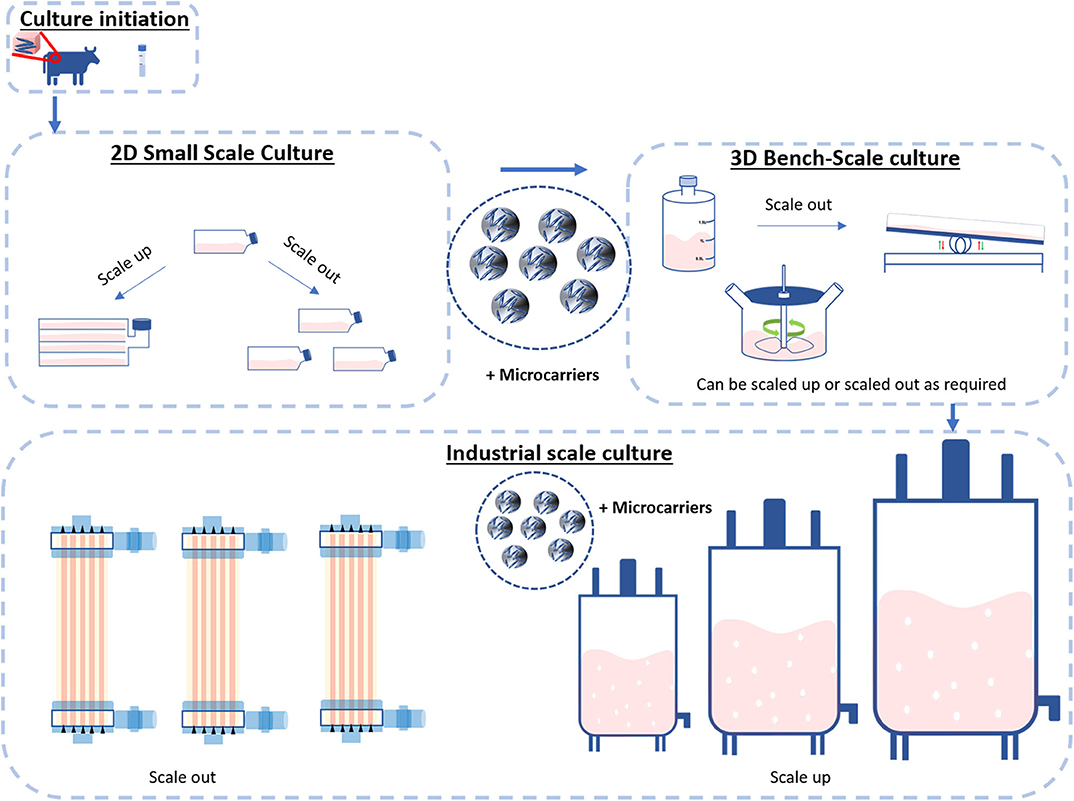
In vitro cell culture techniques: Adherent culture Vs. Suspension culture
The wide ranges of in vitro culturing techniques presently employed are divided into two main categories namely, adherent cell culture and suspension culture. Adherent cell culture involves cultivating cells as monolayers on an artificial substrate. Suspension culture involves culturing cells as free-floating aggregates in a culture medium.
Characteristics and advantages of adherent cell culture
A bulk of the vertebrate derived cells with the exception of some hematopoietic cell lines, are scaffold or anchorage dependent, and thus requires a cell culture surface that facilitates cell adhesion and spreading. The cells are grown in a 2D monolayer on specialized surfaces termed tissue culture treated. Regardless for their need for a scaffold, most cell lines including some insect cell lines can easily be adapted for suspension culture.
An adherent culture requires regular passaging, using enzymatic or mechanical dissociation, and can easily be inspected under an inverted microscope. However cell growth is often limited by surface area of culture surface, which may limit product yield for large-scale applications. Adherent cultures are primarily used for cytology, regular and continuous harvest of cellular products, and other research applications. However as the cells are only able to grow in 2D, they may not accurately reflect in-vivo like cell structure or function, which is often a severe limitation of 2D cultures affecting drug response studies as well as pathophysiological research.
Characteristics and advantages of Suspension cell culture
Cells grown in suspension culture, grow in 3D direction, and are maintained in regular, non-treated culture flasks. Large-scale suspension cultures are constantly agitated to allow for adequate gas and nutrient exchange. This is primarily achieved by the use of a magnetic stirrer or rotating spinner flasks. Smaller scale suspension culture can also be grown in low attachment well plates with cell repellent coating (such as BIOFLOATTM well plates) to encourage cell-cell self aggregation.
Suspension cultures are appropriate for most cells, including non-adhesive cell lines such as hematopoietic cells. These cultures are fairly easy to passage without mechanical or enzymatic dissociation; albeit close monitoring of cell number and viability is essential to determine growth patterns. Cultures are often diluted to stimulate or maintain growth. Suspension cultures are excellent candidates for large-scale production, as cell growth is regulated by the concentration of cells in medium which can easily be scaled up. It is also low tech and economical, as it can be cultured in regular vessels, that are agitated and shaken to maintain adequate gas exchange.
Suspension cultures has widespread industry applications such as for bulk protein production (vaccines, enzymes etc), and batch harvesting. Smaller scale suspension cultures has the added advantage of being excellent platforms for 3D cell cultures, that encourages cells to grow in a in-vivo 3D fashion, with in-vivo like structure, and extracellular matrices, with in-vivo like cell-cell interaction and function. These cultures have thus become a vital tool in pathophysiological research, as well as high throughput drug screens, yielding physiologically relevant, translatable information.
With increasing technological advances and better analytical tools and standards, in-vitro cultures still remains the best tool in biomedical research. They are overall low-tech, easily adaptable, reliable, reproducible, and economical when compared with animal models.
References
1. Palomeras S, Rabionet M, Ferrer I, Sarrats A, Garcia-Romeu ML, Puig T, Ciurana J. Breast Cancer Stem Cell Culture and Enrichment Using Poly(ε-Caprolactone) Scaffolds. Molecules. 2016; 21(4):537
2. Bellani CF, Ajeian J, Duffy L, Miotto M, Groenewegen L and Connon CJ (2020) Scale-Up Technologies for the Manufacture of Adherent Cells. Front. Nutr. 7:575146.



